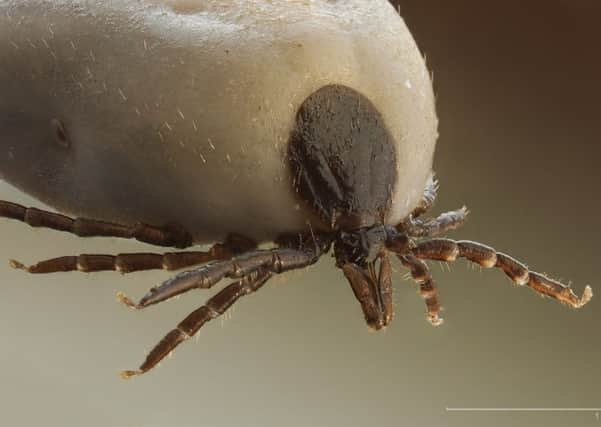Blood-sucking parasite warning goes out to walkers on the South Downs


A warning sign is in place in Glynde on a field gate, in Ranscombe Lane, which leads to the popular Mount Caburn and Bible Bottom walk on The Downs.
The sign states that ticks are known to be present in the area and advises walkers to wear light coloured trousers and tuck their trouser bottoms into their socks.
Advertisement
Hide AdAdvertisement
Hide AdTicks, can occasionally be infected by Lyme Disease, which they pick up from livestock. The disease can result in debilitating flu-like symptoms which can last for years.
Ticks are tiny spider-like creatures likely to be found in longer grass or woodland, which attach themselves to bare flesh when people brush by.
Once a tick bites into the skin, it feeds on blood for a few days before dropping off.
Many people with early symptoms of Lyme disease develop a circular red skin rash around a tick bite.
Advertisement
Hide AdAdvertisement
Hide AdThe rash can appear up to three months after being bitten by a tick and usually lasts for several weeks. Most rashes appear within the first four weeks. The skin will be red and the edges may feel slightly raised.
Not everyone with Lyme disease gets the rash. Some people also have flu-like symptoms in the early stages, such as: a high temperature, or feeling hot and shivery, headaches, muscle and joint pain, tiredness and loss of energy.
Only a small number of ticks are infected with the bacteria that cause Lyme disease. A tick bite can only cause Lyme disease in humans if the tick has already bitten an infected animal.
But it’s still important to be aware of ticks and to safely remove them as soon as possible, just in case.
Advertisement
Hide AdAdvertisement
Hide AdTicks that may cause Lyme disease are found all over the UK, but high-risk areas include grassy and wooded areas in southern England and the Scottish Highlands.
Tick bites aren’t always painful. You may not notice a tick unless you see it on your skin. Regularly check your skin and your children’s or pets’ skin after being outdoors.
To remove a tick safely, use fine-tipped tweezers or a tick-removal tool – you can buy these from some pharmacies, vets and pet shops.
Grasp the tick as close to the skin as possible and slowly pull upwards, taking care not to squeeze or crush the tick. Dispose of it when you’ve removed it. Clean the bite with antiseptic or soap and water.
Advertisement
Hide AdAdvertisement
Hide AdNHS advice is that you should see a GP if you have been bitten by a tick or visited an area in the past month where infected ticks are found and you get: flu-like symptoms – such as feeling hot and shivery, headaches, aching muscles or feeling sick, or a circular red rash Tell them if you’ve been in forests or grassy areas.
To reduce the risk of being bitten: cover your skin while walking outdoors and tuck your trousers into your socks; use insect repellent on your clothes and skin – products containing DEET are best; stick to paths whenever possible; wear light-coloured clothing so ticks are easier to spot and brush off.